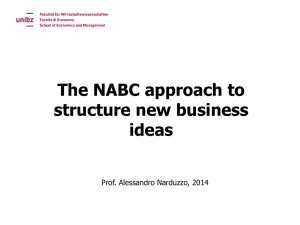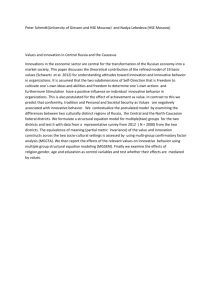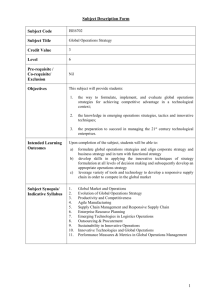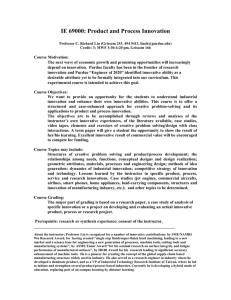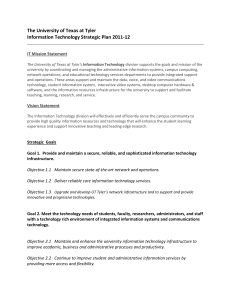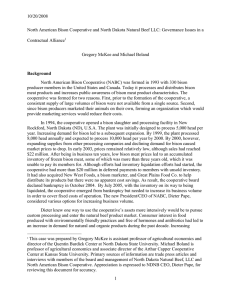How to do a project
advertisement
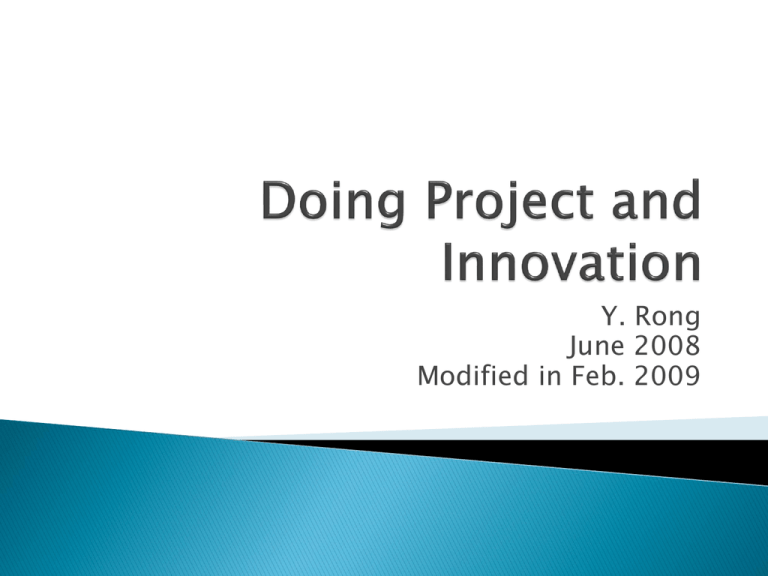
Y. Rong June 2008 Modified in Feb. 2009 Industrial leaders Initiation of a project (any project) Innovative way to do: NABC ◦ Need analysis ◦ Approach determination ◦ Benefit/cost analysis ◦ Competitors How to identify/define a project ? ◦ ◦ ◦ ◦ Problem to solve – need (not only to learn) Need from industry (background) General area of study Specific problem to solve What is a good project ? ◦ Interesting problem – meaningful ◦ No answers ◦ Right scope ?? Why team ? ◦ ◦ ◦ ◦ ◦ ◦ Or virtually you work with people in the area More ideas Multiple expertise Task division Learn big picture / other people’s work Practice real working conditions What is leadership ? ◦ Be responsible ◦ Own the project How to start ? ◦ Understand/define problem Need – tell story ◦ Understand the background ◦ ◦ ◦ ◦ The state of the art – tools to use vs. developing tools Set goal / objectives Decide methods Make a plan Estimate the outcomes – impact ? ◦ Innovation theory NABC Why is the process important ? ◦ Engineering project vs. student project ◦ Justify every steps ◦ Where are the details ? Why is communication important ? ◦ Understand the problem, ideas/method, and …… ◦ Do the things need to be done (only) ◦ Make your thought understood, adjusted and accepted How to communicate ? ◦ ◦ ◦ ◦ Intention Be prepared – with an objective Right questions – with expectation of response Then right people and right time What are good results from the project ? ◦ ◦ ◦ ◦ Solution of the problem, and also general hopefully Innovative and feasible/can be realized Impact/improvement of current operation Failure vs value of the project ?? ◦ Measured and determined by the objective definition !!! ◦ Acceptance by customer (who ?) ◦ Academic value is determined at the project planning stage Different from classroom learning Not for taking exam, but to prepare for real work Academic and non-academic achievements How to evaluate ? ◦ Telling stories ? ◦ Follow up study ? ◦ And ? Engineering education ◦ Early age: experimental study ◦ Since 1970s: math modeling and numerical solutions ◦ Now: entrepreneurship Decision making Multi-objectives Many tools developed and available Tool selection, knowledge integration Decision making through communication Task oriented and pull strategy ◦ Need for globalization Global economics, global research and development Global education Working with people from different cultural environment Own the project ◦ Initiate necessary activities to conduct the project ◦ Make vague condition clear Working with people ◦ Partners, advisors, and the sponsor ◦ Lab and shop people too Seek help and keep progress Help each other Project planning - Progress control ◦ Change vs. plan Change of condition Change of the goal ?? ◦ How to deal with changes Communication Problem definition ◦ From vague to clear ◦ Solution to seek Current techniques ◦ Identify gaps of current technology and the solution of the problem Define objectives and expected results Decide methods and procedure Do the work Problem ◦ A negative statement Goal Objectives ◦ Scope of the project Method and procedure ◦ Tasks and plan Expected results Need for new knowledge Problems in physical world Technical preparation ◦ Where to learn ? ◦ ◦ ◦ ◦ What is the problem in general ? Why the problem is important ? What is current practice ? Then what is the problem specifically ◦ What techniques are needed to solve the problem ? ◦ How the technology has been developed ? ◦ What is the current status of the technology ? What can and cannot do with it ? Why ? What tools are available ? ◦ Then what is the gap ? Possible to get there ? Problem formulation Conceptual design Detail design ◦ Customer need study ◦ Requirement list ◦ Technical specification ◦ ◦ ◦ ◦ Ideas Comparison and justification State of the art Technical challenges ◦ Structural design with parameters ◦ Analysis and feedback Verification and prototyping Ramp-up for mass production Problem formulation Current “system” analysis Generating solution ◦ ◦ ◦ ◦ Company information Customer need study Requirement list Technical specification ◦ ◦ ◦ ◦ Data collection – what should know ? Problem identification – any principle to use ? Roof-cause analysis Possible ways to improve ◦ Structural design with parameters ◦ Analysis and feedback Verification and prototyping Ramp-up for implementation Define Measure Analysis Improve Control In comparison with NABC Difference from a project done by smart high students ◦ Systematic study ◦ Justification in each step ◦ ?? Different from competition type of projects ◦ ◦ ◦ ◦ Real problem Unknown results Accessed by application Both innovative and valuable, but different Introduction Background Method Results Conclusions Reference Appendices General area Specific problem Goal and objectives Gap between the solution and current knowledge Expected results Company Product and processes Problems – key technology Areas of study - literature review Current study – literature review Relevant to objectives Problems remained as a summary ?? Methods/procedure Results Conclusions Reference Appendix Need more details !!!!!! Use “all” figures in the presentation ◦ Against the objectives ◦ For each objective in a logic way ◦ Evidence of conclusions (to prove) ◦ List each without evidence ◦ Not only the web-site ◦ More detailed evidence Personal ability ◦ Technical development Project initiation Logic thinking Problem solving – skill ? ◦ Communication ◦ Writing ◦ Presentation Logic drive – lean More figures, less words Phrases, not sentences ◦ Team work and leadership ◦ ?? Students gain ability and skills on Communicating effectively in various contexts Understanding of professional & ethical responsibility Understand solution impacts and sustain/exploit benefits Project management and relationship management Quick response to changes, etc. Impact on the students Broad vision on global economy and culture Better job opportunity Confidence Everything can be a project One important component of study ◦ Most important ? How innovative could it be ? Your opinion ? Thanks for your attention Talk about your project in 5 minutes Basically telling a story on what you are doing ◦ Why, what, and so what Comments from audience ◦ Positive first ◦ Negative followed ◦ General comments Need 3 volunteers
